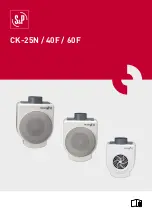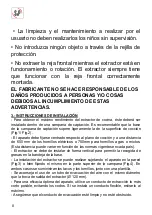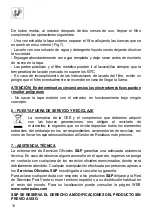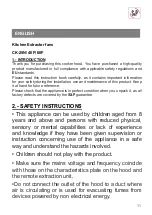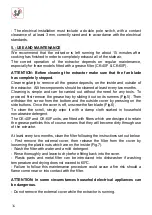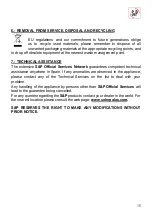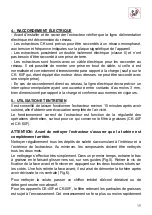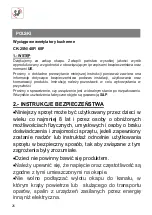
13
• Don’t remove the front grille while the fan is on or in
motion. The fan must always be used with the front
grille properly assembled.
THE MANUFACTURER WILL NOT BE HELD LIABLE FOR
DAMAGES TO PEOPLE AND/OR PROPERTY DUE TO
NON-COMPLIANCE WITH THESE WARNINGS.
3.- INSTALLATION
- For best performance, the exhaust fan must be installed inside a kitchen hood.
The base of the kitchen hood should slightly overhang the cooking surface
(Fig.1/ Fig.2).
- The device must be centered over the cooking surface at a distance of 650 mm
for electric ranges and 750 mm above gas or mixed ranges. (This distance may
vary depending on current standards in each country).
- The exhaust fan must be installed vertically to allow for cleaning grease from
the tray.
- Installation can either be by wall mounting (Fig.3), or at the top of a kitchen
hood (Fig.4). A bag containing the necessary
screws and plugs for either
installation is supplied with the unit, together with a template.
- We recommend using an air-outlet duct with the same diameter as the opening
on the exhaust fan (Ø 120 mm).
- For optimal efficacy, use the shortest exhaust duct possible, avoiding elbows. If
using a flexible duct, stretch it as much as possible.
- Make sure that the exhaust duct is clean and unobstructed.
4.- ELECTRICAL WIRING
- Before proceeding with the installation and electrical wiring, make sure that the
mains supply is switched off.
- The extractors have been designed for a single-phase supply, with voltage and
frequency as indicated on the rating plate.
- The extractors have been designed with double electrical insulation (class II),
and therefore do not require an earth connection.
- The extractor comes with the lead out for connection to the mains. Except for
the CK-60F which has a two-speed motor, you can connect to the mains using a
normal plug correctly sized to match the electrical load.
Summary of Contents for CK-25N
Page 1: ...CK 25N 40F 60F...
Page 2: ......
Page 3: ...3...
Page 4: ...4...
Page 36: ...36 CK 25N 40F 60F 1 S P 2 8...
Page 37: ...37...
Page 38: ...38 3 1 2 650 750 Fig 3 Fig 4 120...
Page 39: ...39 4 CK 60F 3 5 15 CK 40F 60F CK...
Page 40: ...40 fig 5 fig 6 CK 40F 60F CK fig 7 60...

